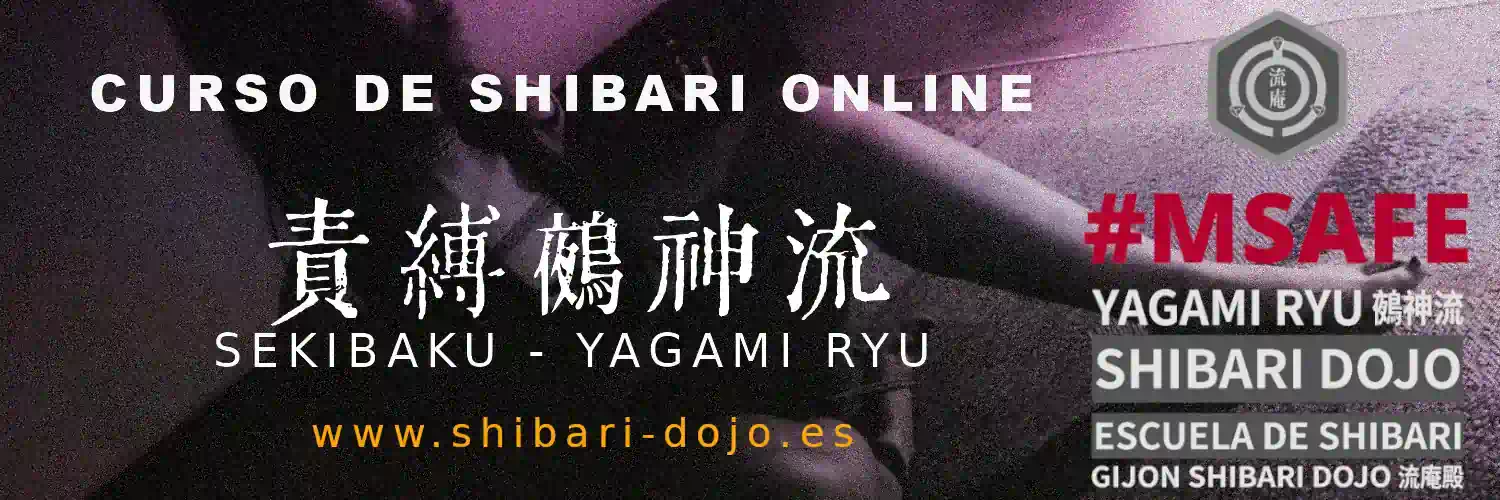One key area of study in Yagami Ryu is Nawasuji (縄筋). This concept encompasses all techniques and knowledge necessary to achieve effective and fluid rope handling.
In sekibaku, the function of the rope is to provide support and stabilize the restraint. Maintaining tension on the body through the rope is one of the key skills we must learn and practice.
Before diving into the specifics of the rope and the techniques it involves, we must first understand its role in the Yagami Ryu style of shibari.
The Restraint Does NOT Come from the Rope
Restraints are not created by the rope. NEVER. An effective and safe restraint is built upon anatomy.
It is through anatomical knowledge and an understanding of biomechanics that we can create restraints that are secure and effective, capable of being maintained safely throughout the session without the need to constantly ask, "Are you okay?" every five minutes.
A lack of technique in restraint and safety makes any erotic interaction unsustainable beyond quick relief.
Let us be clear: rope in shibari is a tool. It must be handled with both safety and skill. Failing to do so amounts to aggression—it introduces physical risks into the erotic encounter that are entirely unacceptable under any circumstances.
The rope is simply used to reinforce the restraint by providing support, with its primary purpose being to serve as a tool for management and communication.
Choosing the Right Rope
We will need a soft, flexible material with a certain degree of dynamism, allowing us to modulate handling and tension while efficiently transmitting vibrations.
This immediately rules out hard or rigid elements, such as metals (handcuffs, chains, etc.), as well as some organic or synthetic materials used to make ropes that are difficult to handle.
Instead, this opens the door to "soft" materials, such as cords and ropes made of natural fibers, particularly those with a high degree of manageability. It also includes clothing items and any other elements that come to mind, as long as they possess these properties.
Obviously, you can’t create complex "ties" with a necktie, and managing restraint with fabric is more challenging. However, for stabilizing a simple restraint and efficiently managing it in such cases, this is more than sufficient.
But if we want to go further, explore, and advance our technical knowledge, we’ll need appropriate tools.
In this case, the right choice is braided jute rope, preferably three-strand, with a behavior that is more “soft” than “rigid.”
The reason is that a large part of the techniques we use are developed based on this type of rope, so having the right rope will make the process significantly easier.
A tip to get started: three ropes between 7 and 8 meters long with a diameter of 5 mm are more than sufficient for practicing and learning. Adding a couple of ropes about two meters long (same diameter) is all you’ll need at this stage of learning.
Gracias por señalarlo. Aquí tienes la versión revisada con el término correcto, twist, en lugar de braid:
Twisted Natural Fiber Rope
Let’s break down how the technique adapts to twisted rope.
This type of rope is made from natural fibers, specifically jute, which consists of laminated leaves. Once harvested, these leaves are processed mechanically to create elongated plant fibers.
The length of the fibers is crucial in determining the final strength of the rope. Similarly, the mechanical process used to convert the leaves into fibers affects whether residues (usually from the stem or petiole) remain embedded within the fibers. These residues are undesirable as they negatively impact the rope’s texture and handling.
Using the plant fibers, threads are produced through a twisting process that imparts a twist direction (e.g., clockwise).
Longer fibers are distributed over a greater length of thread, providing enhanced resistance to weight and tension.
A variable number of threads are then twisted into cords, following a twist direction opposite to that of the thread (continuing the example, counterclockwise).
The number of threads in each cord determines the thickness, manageability, and resistance of the rope to friction and tension.
Finally, the cords—typically three—are twisted together (clockwise) to form the rope. The number of twists per meter of rope influences its strength and ease of handling.
This rope structure, forming a torque, is key not only to increasing its durability but also to facilitating the transmission of vibrations along its length.
Another effect, which decisively influences its handling, is that the rope has a direction: the twisting makes it easier to slide in one direction while offering resistance in the opposite direction.
For this reason, rope in shibari is handled “folded in half” so that when used for tying, blocking, or knotting, it slides easily while resisting backward movement.
Handling the rope “in the same direction as the twist” also facilitates the transmission of vibrations.
The natural material and twisting give the rope a certain degree of dynamism, which, when applied to an encircling tie, creates a characteristic “massage” effect.
Left-Handed vs. Right-Handed
A technical note: Most jute ropes used in shibari—at least those originating from Bangladesh—have a final twist (their outermost layer) that goes "to the left," making them, in a sense, left-handed.
This has a direct impact on tying, particularly when it comes to creating frictions or locks, techniques that rely heavily on the rope’s twist.
As a result, left-handed riggers will find it somewhat easier to execute these technical applications, as they align naturally with the movement of their hands. Conversely, right-handed individuals may often need to add an extra motion to establish the friction effectively.
